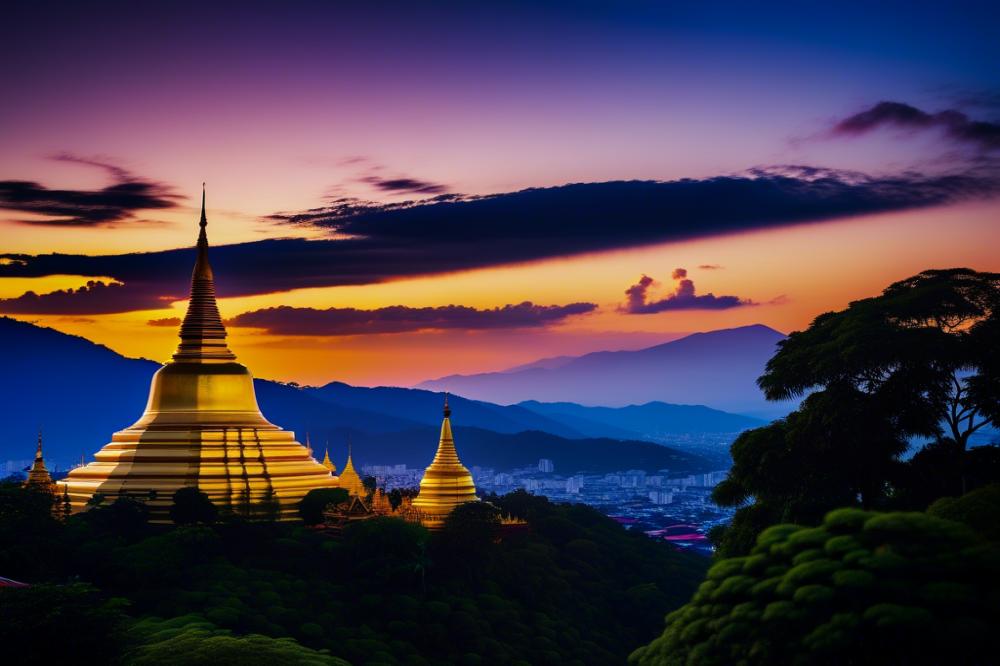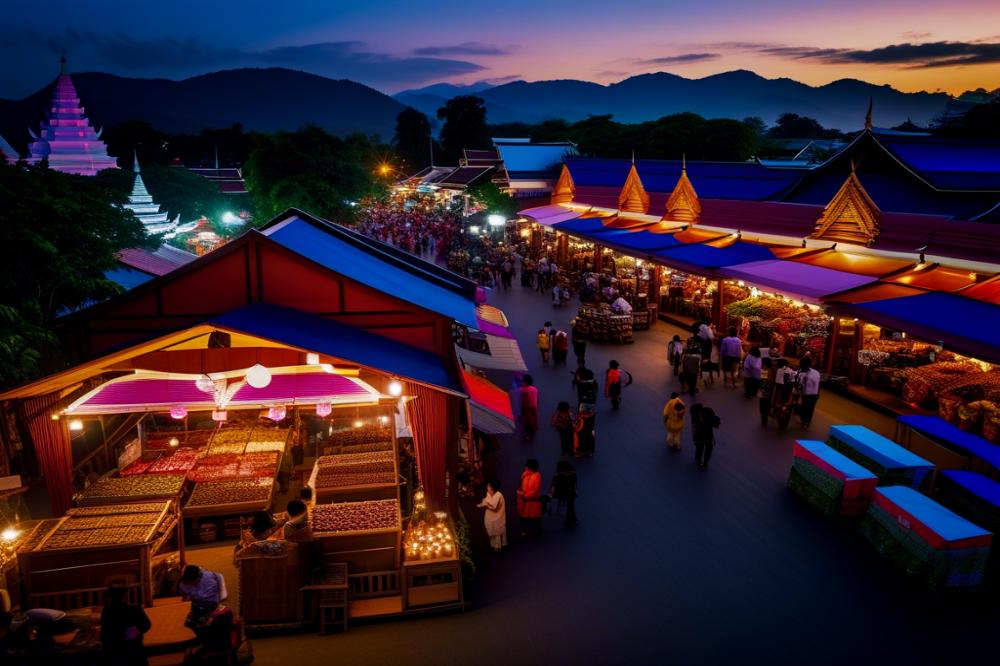Exploring Adventure Holidays in Thailand
Chiang Rai is an exciting destination for adventure holidays in Thailand. Nestled in the northern part of the country, it offers a blend of rich culture and stunning landscapes. Travelers frequently visit this area not just for relaxation but for unique experiences. Among its many attractions, the White Temple stands out as a remarkable example of modern architecture and Buddhist art.
As a prominent cultural site, Wat Rong Khun has captured the attention of tourists and photographers alike. They marvel at the intricate sculptures and detailed structure, a sight that is both awe-inspiring and thought-provoking. Each element of the temple showcases deep religious significance and reflects the artist’s vision.
Sightseeing in Chiang Rai is not limited to the White Temple, yet it is often the highlight for many. Adventure seekers and casual visitors can find numerous opportunities for exploration. This area is filled with natural beauty, making it ideal for various outdoor activities. Whether trekking through lush jungles or visiting traditional markets, one can experience the heart of Thai culture.
In conclusion, Chiang Rai offers an array of experiences for every type of traveler. The combination of exhilarating adventures and profound cultural experiences sets this destination apart. A visit to the White Temple is a must for anyone wanting to appreciate the blend of art, spirituality, and innovative design in Thailand.
Overview of the White Temple
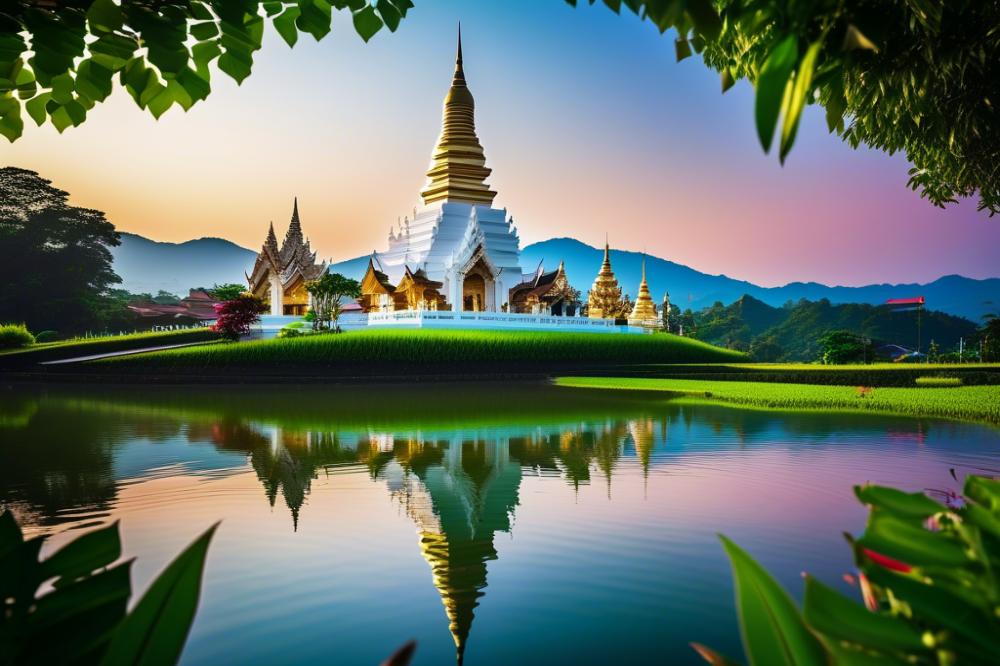
Situated in Chiang Rai, Thailand, the White Temple is a remarkable example of contemporary Buddhist art. Its creation began in 1997, driven by the vision of Chalermchai Kositpipat, a local artist. He designed this cultural site as a masterpiece to represent Buddhist teachings in a modern context. Unlike traditional temples that often use ancient styles, Wat Rong Khun features a dazzling all-white exterior that glimmers in the sunshine.
Visitors are often struck by the striking contrast between the temple’s glass pieces and its white facade. This architectural choice symbolizes the purity of the Buddha and reflects the idea of enlightenment. Artistic details fill the temple grounds, showcasing intricate sculptures and stunning artwork. Each element adds to the narrative of Buddhist philosophy, making it a valuable spot for both sightseeing and religious significance.
Standout features include the unique way it incorporates both modern and traditional elements. Unlike many temples, which feature classic Thai designs, the White Temple showcases surreal sculptures that blend fantasy with spirituality. Creatures, both mythical and modern, adorn the paths leading to the main sanctuary. Many people find these designs thought-provoking and often stay to take photographs.
While photography is encouraged, the site maintains its essence as a pilgrimage for many Buddhists. The temple’s rich symbolism invites contemplation, making it not just a tourist attraction but a significant place for reflection. Chalermchai’s mission goes beyond mere aesthetics; he aims to convey deep spiritual messages through art. Each visit offers an opportunity to explore new layers of meaning within the architecture.
Cultural and Religious Significance
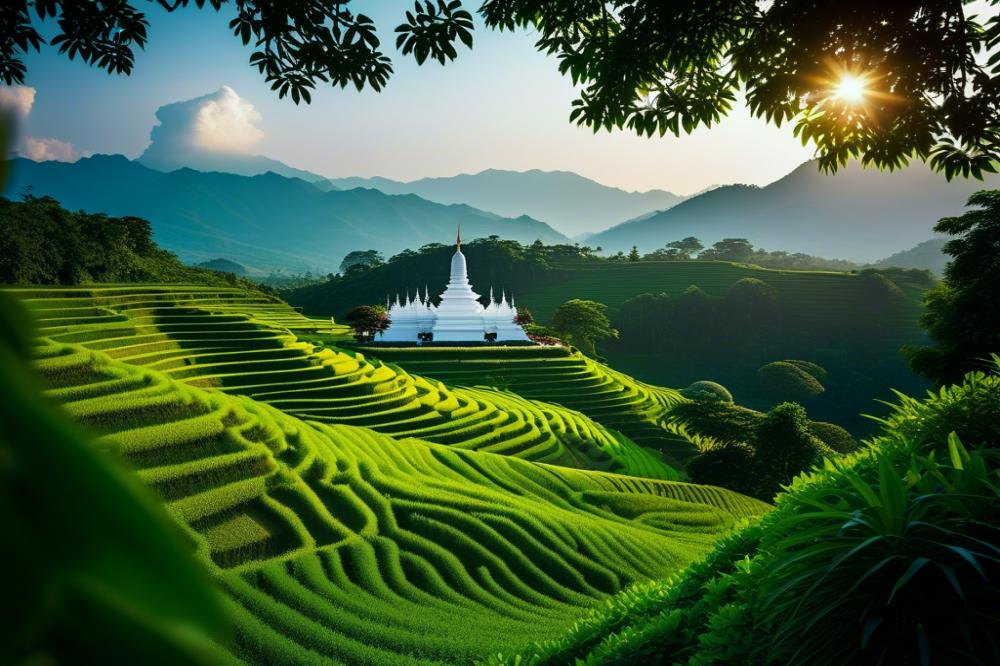
Visiting Wat Rong Khun in Chiang Rai, Thailand is not just about admiring striking architecture. It serves as a significant spiritual site for Buddhists. Throughout the temple, visitors can explore various elements of Buddhist art that weave deep beliefs into stunning visuals.
The temple’s design features an array of sculptures and murals that convey powerful messages. Each piece aims to reflect concepts of good and evil, life and death, and the path to enlightenment. Tourists often stop to take photographs, capturing these intricate artworks that tell a story of the human experience.
One key aspect of the structure is its combination of contemporary art with traditional religious themes. This blend creates a fascinating dialogue between modern artistic expression and ancient beliefs. The architect, Chalermchai Kositpipat, envisioned a place where art and spirituality would converge. As people walk the grounds, they encounter different symbols that prompt reflection and meditation.
The incorporation of white tones in the temple’s architecture symbolizes purity and the quest for nirvana. Visitors often find themselves pondering the meanings behind various sculptures. Some figures represent demons, while others stand for enlightened beings, showcasing the contrast between torment and salvation. This artistic approach encourages contemplation, making it a popular destination for those interested in cultural tourism.
Murals stretching across the temple walls delve into contemporary issues, blending historical and modern narratives. They touch on topics like environmentalism and consumerism, all while maintaining a spiritual focus. This makes the temple relevant in today’s world, engaging visitors in a broader discussion about ethics and existence.
For those interested in sightseeing, the White Temple stands out as a remarkable cultural site. Its renowned status draws art enthusiasts and spiritual seekers alike. Photographs taken here are often shared widely, inspiring others to explore this exceptional destination.
Visiting the White Temple
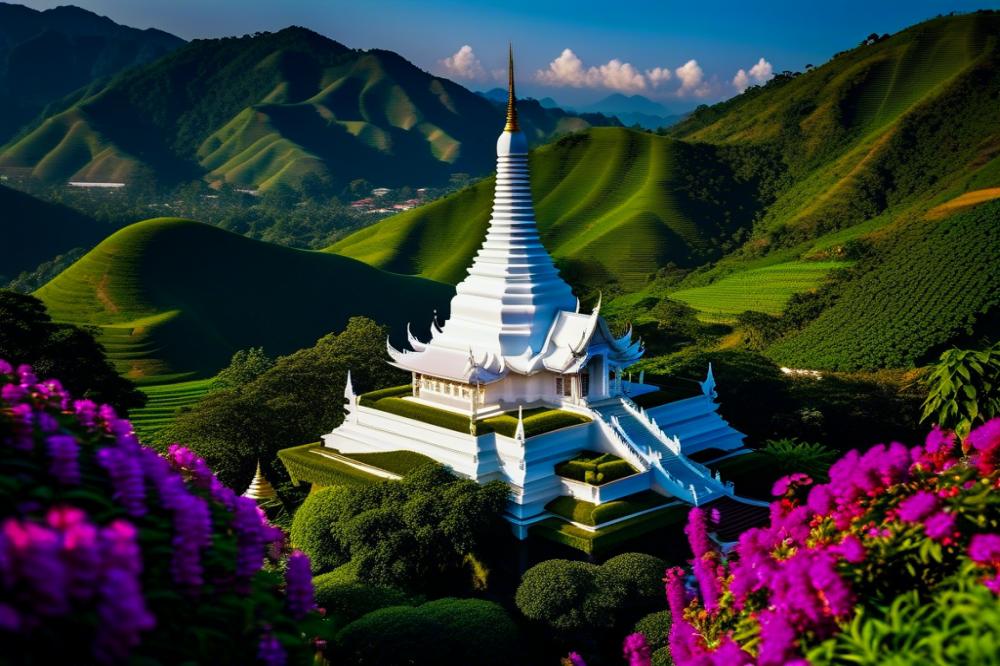
Located in Chiang Rai, Thailand, the White Temple is an architectural marvel that draws many tourists each year. Its stunning white exterior and intricate sculptures depict important aspects of Buddhist art and philosophy. Visitors looking to explore this cultural site can find it on Highway 1, about 13 kilometers from downtown Chiang Rai.
The temple has specific opening hours to facilitate visiting. It typically opens its doors from 8:00 AM to 6:00 PM daily, offering ample time for sightseeing. Admission is free, making it accessible for everyone who wants to appreciate the beauty of this remarkable site. However, contributions to the temple for maintenance are welcomed and appreciated.
Photography enthusiasts will find plenty of opportunities to capture breathtaking images. The glistening surfaces and delicate details of the sculptures provide a perfect backdrop. Remember to be respectful as this is not only a tourist attraction but also a functional space for worship.
To enhance your visit, consider exploring nearby attractions as well. The Blue Temple, or Wat Rong Suea Ten, is just a short ride away and offers its distinctive beauty. The Golden Triangle, where the borders of Thailand, Laos, and Myanmar meet, is also worth visiting. Engaging with these locations can add depth to your understanding of the region’s rich culture.
When planning a day in Chiang Rai, start with the White Temple early in the morning. This timing can help you avoid large crowds. Enjoy a leisurely stroll around the grounds, taking in the intricate details of the architecture. Afterward, grab lunch at a local eatery, sampling delicious Northern Thai cuisine.
Exploring the local markets can be a great way to spend the afternoon. Food stalls and artisan shops offer unique souvenirs and delicious snacks. Make sure to take your time and soak in the atmosphere of this charming city.
Photography Opportunities
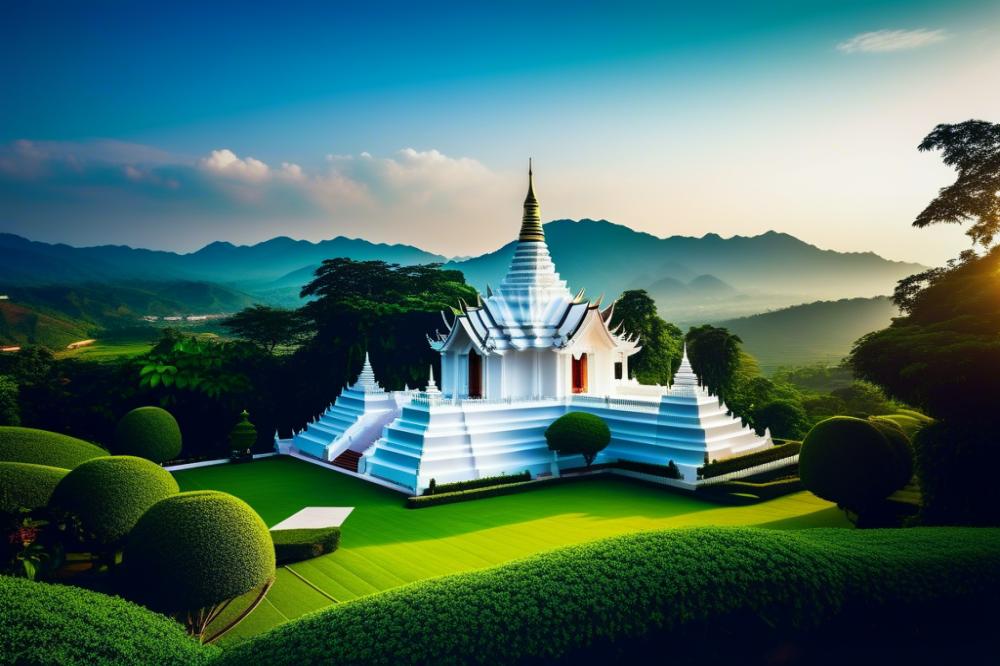
Visiting the White Temple in Chiang Rai, Thailand, offers countless photography opportunities. This architectural wonder, known for its striking design, allows photographers to capture stunning images. Begin at the entrance, where the bridge represents the journey from the mundane to the sacred. The reflection of the temple in the pond provides a dynamic foreground for photos.
As you wander the grounds, look for the intricate sculptures. They tell stories of Buddhist art, adding layers of meaning to your images. Focusing on smaller details creates contrast against the grand architecture. Consider varying your angles; shooting from a lower perspective can emphasize height and grandeur.
Lighting plays a crucial role in photography. Early mornings or late afternoons provide softer light, enhancing the temple’s beauty. Try to avoid harsh midday sun, which can wash out colors. Use cloudy days to your advantage, as diffused light can create a dramatic atmosphere for your shots.
Incorporating surroundings into your photos can enhance compositions. Capture tourists interacting with sculptures to give context to your images. Framing the temple with trees or flowers can add depth and interest. The vibrant colors of the artwork contrast beautifully against the blue sky, so don’t miss out on capturing those moments.
Experiment with close-ups of the artistry on the temple walls. The intricate details of the artworks reflect the cultural significance of this site. They showcase the craftsmanship that makes the temple a key spot for tourism and sightseeing. Highlight different perspectives and compositions to tell a more complete story through your lens.
Don’t forget to capture the essence of the location through candid shots of other visitors. Their reactions can convey the awe inspired by this unique cultural site. Taking photos during off-peak hours helps to avoid crowded scenes in your images, lending a serene quality to your photography.
Experiencing Local Culture
Exploring Chiang Rai offers much more than the famous White Temple. Vibrant local markets fill the streets and draw visitors in. One popular spot is the Saturday Night Walking Street Market, where locals gather. Here, artisans display their crafts alongside delicious street food. Fresh juices, spicy dishes, and sweet treats make tasting the local cuisine a delight.
Traditional crafts thrive in this region. People can find skilled artisans creating intricate textiles and handmade pottery. These items not only serve as souvenirs but also promote cultural heritage. Buying such crafts directly supports local communities. It fosters a sense of pride among artisans who dedicate their skills to preserving these traditions.
Sightseeing around Chiang Rai reveals stunning temples beyond the well-known ones. Temples adorned with beautiful architecture draw in tourists and photographers alike. Each structure reflects deep Buddhist art, showcasing the rich history of the area. Visitors often admire the detailed sculptures that convey various religious stories and beliefs.
Tourism plays a significant role in Chiang Rai’s economy. Many locals depend on the influx of visitors. This industry helps sustain their livelihoods while also funding cultural preservation projects. As tourists engage with local customs, they encourage a mix of tradition and modern practices. This blend helps to maintain the city’s unique identity amidst change.
Culinary experiences reflect the region’s culture too. Travelers should not miss trying Khao Soi, a coconut curry noodle dish famous in the north. Engaging with local cuisine allows a deeper understanding of the community’s way of life. Whether tasting street food or dining in a cozy restaurant, the experience is enriching.
Photographers often find Chiang Rai a perfect backdrop for capturing authentic moments. Beautiful landscapes, friendly locals, and intricate details offer endless opportunities for stunning visuals. By documenting their journeys, visitors contribute to promoting the area, showcasing its beauty to the world.
Local festivals also provide unique insights into the culture. Events often feature music, dance, and traditional performances that celebrate various aspects of life in Chiang Rai. Attending these celebrations connects tourists with locals, creating shared memories of joy and festivity.
Visiting the Splendor of Wat Rong Khun
The allure of the White Temple goes beyond its stunning facade. This intricate masterpiece captures the imagination of visitors from all corners of the globe. Situated in Chiang Rai, Thailand, it offers a unique blend of art, architecture, and spirituality. Each detail tells a story, reflecting not only creativity but also deep cultural significance.
Adventure travelers will find themselves entranced. Walking through this temple grounds, one can’t help but feel a sense of wonder. The shimmering white structure stands out against the vibrant blue sky. Intricate carvings and reflective ponds enhance its beauty, creating a picturesque setting. Snap a few photos, but remember: soaking in the atmosphere is key.
Moreover, the journey to the temple is just as rewarding. The surrounding landscapes are breathtaking, with lush mountains and serene rivers. Exploring Chiang Rai’s rich culture and natural beauty adds layers to your experience. From delicious local dishes to nearby attractions, there’s much to discover in the region.
Visiting Wat Rong Khun is more than just a trip. It opens a window into Thai artistry and heritage. Each corner reveals something new, beckoning travelers to pause and reflect. Do not miss this extraordinary destination on your journey through Thailand.

